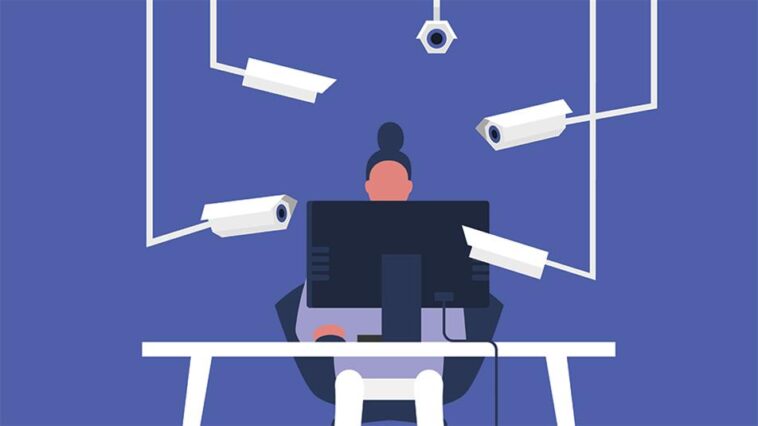Where every keystroke and online interaction can be tracked, employee monitoring has become more prevalent than ever before. Employers are increasingly turning to various tools and software to keep tabs on their workforce, all in the name of productivity and security. However, this surge in employee monitoring comes with a double-edged sword. While it offers certain benefits, it can also backfire on employers, leading to unintended consequences and a potential breach of trust.
Surge in Employee Monitoring
Enhancing Productivity or Breaching Privacy?
Employee monitoring has witnessed a dramatic surge in recent years. Employers, driven by the need to boost productivity and protect sensitive data, are investing in software that tracks every digital move of their workforce. From computer monitoring to screen capture, and keystroke logging to GPS tracking on company devices, the range of monitoring tools available is extensive. While these measures aim to enhance productivity, they often blur the line between professional and personal life, raising concerns about privacy invasion.
Legal Landscape

With the rise in employee monitoring, governments and regulatory bodies are taking notice. Laws regarding the extent to which employers can monitor their employees vary from country to country. In some places, monitoring without consent is illegal, while in others, it is allowed as long as certain conditions are met. This legal ambiguity can lead to costly legal battles and damage to a company’s reputation, should it overstep the bounds of what’s legally permissible.
Variations Across Jurisdictions
The legal stipulations around employee monitoring are far from uniform; they differ significantly across countries and even within regions of the same country. For instance, European countries governed by the General Data Protection Regulation (GDPR) have stringent laws that often require explicit consent from employees before any form of monitoring can occur. In contrast, the United States has a more decentralized approach, with federal laws providing a baseline of employee privacy rights and individual states offering varying levels of additional protections.
Consent and Notification
One key area of legal focus is the matter of consent. In some jurisdictions, it is unlawful to monitor employees without their explicit consent, usually provided in written form. Even in areas where consent is not strictly required, transparency through some form of notification is often considered best practice and sometimes legally mandated. This can include informing employees that their activities on company devices are subject to monitoring.
Specific Conditions and Limitations
Where monitoring is permitted, it often comes with conditions. For instance, employers may be allowed to monitor work emails but not personal ones. Similarly, GPS tracking might be permitted for company vehicles but may not extend to tracking employees during their personal time. Companies may be obligated to limit the extent, duration, and methods of monitoring to what is strictly necessary for achieving legitimate business interests.
Legal Consequences of Overstepping Boundaries

The penalties for illegal employee monitoring can be severe. Apart from facing fines and sanctions, companies may also be exposed to civil litigation from affected employees. The damage isn’t merely financial; the reputational cost can be long-lasting and far-reaching. News of invasive monitoring practices can lead to low employee morale, decreased productivity, and difficulty in recruiting top talent.
Protecting Employee Rights and Company Interests
To navigate this complicated legal landscape, companies often engage legal experts to conduct audits and assessments of their monitoring practices. Creating a detailed employee monitoring policy, clearly outlining what is and isn’t subject to monitoring and obtaining explicit consent, can also help protect companies from legal repercussions. Employee training and regular updates on monitoring policies can further ensure compliance with the law.
The Future of Legal Landscape in Employee Monitoring
As employee monitoring technology continues to advance, it’s likely that the laws surrounding it will evolve as well. New questions around the ethical implications of emerging technologies like AI-driven monitoring tools or biometric data collection will push lawmakers to revisit and revise existing regulations. Employers will need to stay abreast of these changes to avoid being caught off guard.
Potential Pitfalls of Employee Monitoring
Decreased Employee Morale
One of the major pitfalls of excessive employee monitoring is the erosion of employee morale. When employees feel constantly watched and micromanaged, it can lead to a sense of mistrust and discomfort. This, in turn, may result in decreased motivation and job satisfaction, ultimately impacting productivity negatively.
Invasion of Privacy
Employers may argue that monitoring is essential for security reasons, but employees have a right to privacy too. The invasive nature of some monitoring tools, such as keystroke logging or screen capture, can create a hostile work environment. Employees may become anxious about every action they take, which can stifle creativity and innovation.
False Positives and Employee Burnout

Many monitoring tools are not foolproof and can generate false positives. Innocent actions may be misconstrued as violations, leading to unnecessary reprimands or disciplinary actions. Such instances can lead to employee burnout and a constant state of stress.
Balancing Accountability and Privacy
Controlio strikes a balance between accountability and privacy. It allows employers to monitor work-related activities, such as application and website usage, to ensure that employees stay on task. However, it does not delve into personal information or activities outside of work hours, respecting the boundaries of privacy. If you want this you can find it through the source link.
Conclusion
Employee monitoring is on the rise, driven by the desire to enhance productivity and protect sensitive data. Employers should tread carefully, as excessive monitoring can backfire, leading to decreased morale, privacy concerns, and legal issues. To strike the right balance and ensure a productive yet harmonious work environment, employers must consider the ethical implications of employee monitoring and choose solutions that prioritize both productivity and privacy. In a world where the boundaries between work and personal life are increasingly blurred, it is crucial for employers to adopt responsible monitoring practices that foster trust and collaboration rather than erode them.



